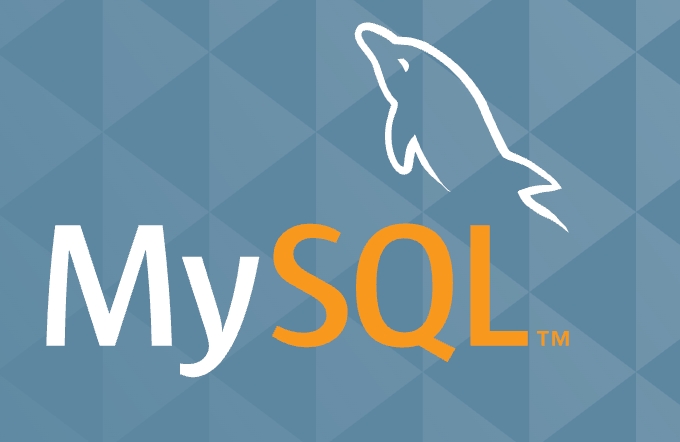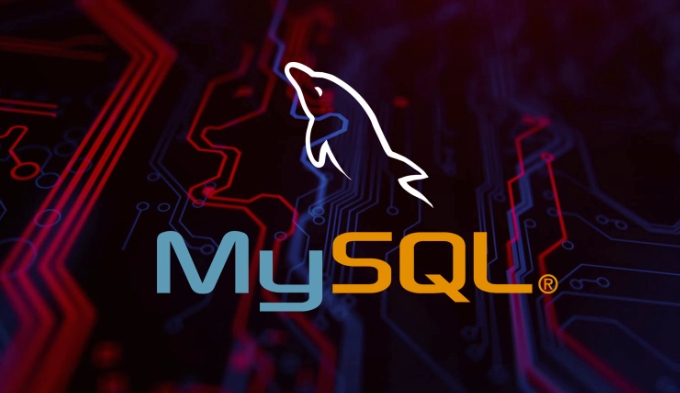To ensure the security of MySQL in the microservice architecture, we need to start from four aspects: access control, encrypted transmission, permission management and log audit. 1. Strengthen access control, create dedicated users and restrict connection source IP, and protect database ports in combination with firewalls or network policies; 2. Enable TLS encryption, configure SSL certificates and force clients to use encrypted connections; 3. Implement the principle of minimum permissions, divide user permissions by business, and avoid global permission abuse; 4. Establish monitoring and log audit mechanisms, centrally analyze logs and set sensitive operation alarms, and promptly detect abnormal behaviors.

Security issues are often easily underestimated when using MySQL in microservice architectures. Due to frequent communication between microservices and dispersed database connections, if a unified security policy is lacking, it is easy to become a breakthrough for attacks. To truly ensure the security of MySQL under this architecture, we cannot rely solely on default configuration, but need to start from multiple aspects such as access control, encrypted transmission, and permission management.

1. Strengthen access control and limit the source of database connections
MySQL allows any IP connection by default, especially when microservices are deployed on multiple nodes. You should clarify which services need to connect to the database and double restrictions through firewall rules and MySQL's user rights system.
- Use the
GRANTcommand to create a dedicated user and specify that it can only be accessed from a specific IP or subnet - Avoid remote login using
rootuser - Disable
skip-name-resolveto prevent latency and potential risks from DNS resolution
In addition, it can be combined with the cloud platform security group or Kubernetes' NetworkPolicy to restrict database ports (such as 3306) to be open only to internal services to avoid exposure to the public network.

2. Enable TLS encryption to protect the data transmission process
When databases are frequently called between microservices, network transmission is the easiest place for attackers to intercept information. To prevent man-in-the-middle attacks (MITM), TLS encryption must be enabled to protect communication between clients and MySQL.
- Generate and configure valid SSL certificates
- Modify MySQL configuration files and enable
ssl-ca,ssl-cert, andssl-key - Forced use
--ssl-mode=REQUIREDwhen connecting to the client
Some development frameworks or ORM tools do not enable SSL by default. At this time, you need to manually add parameters to the connection string to ensure that each connection is encrypted.

3. Implement the principle of minimum permissions and manage database permissions in a refined manner
Each microservice should have only the minimum permissions required to complete its functionality. For example, a service responsible for reading data should not have write or delete permissions. This not only reduces the risk of misoperation, but also reduces the scope of impact when a service is compromised.
- Dividing different database users by business
- Grant specific permissions such as SELECT, INSERT, and UPDATE to each user separately
- Avoid using global permissions (such as
GRANT ALL PRIVILEGES ON *.*)
You can also regularly audit user permissions, clean up accounts and permission settings that are no longer in use, and keep the database environment "clean".
4. Monitor and log audit to detect abnormal behaviors in a timely manner
Even if the previous protective measures are taken, the occurrence of security incidents cannot be completely prevented. Therefore, establishing a complete monitoring and logging mechanism is an indispensable part.
- Turn on slow query logs and general logs to record all SQL operations
- Use MySQL Enterprise Audit plug-in or open source tools such as Percona Audit Log Plugin
- Centralize the logs to ELK or other analysis platforms and set sensitive operational alert rules (such as DROP TABLE)
Through these methods, you can detect suspicious behavior at the first time, such as a large number of failed login attempts or unauthorized users performing high-risk operations.
Basically these key points. Although each step is not complicated, if any of these links are ignored, it may bring safety risks to the entire system.
The above is the detailed content of Securing MySQL for Microservices Architectures. For more information, please follow other related articles on the PHP Chinese website!

Hot AI Tools

Undress AI Tool
Undress images for free

Undresser.AI Undress
AI-powered app for creating realistic nude photos

AI Clothes Remover
Online AI tool for removing clothes from photos.

Clothoff.io
AI clothes remover

Video Face Swap
Swap faces in any video effortlessly with our completely free AI face swap tool!

Hot Article

Hot Tools

Notepad++7.3.1
Easy-to-use and free code editor

SublimeText3 Chinese version
Chinese version, very easy to use

Zend Studio 13.0.1
Powerful PHP integrated development environment

Dreamweaver CS6
Visual web development tools

SublimeText3 Mac version
God-level code editing software (SublimeText3)

Hot Topics
 Establishing secure remote connections to a MySQL server
Jul 04, 2025 am 01:44 AM
Establishing secure remote connections to a MySQL server
Jul 04, 2025 am 01:44 AM
TosecurelyconnecttoaremoteMySQLserver,useSSHtunneling,configureMySQLforremoteaccess,setfirewallrules,andconsiderSSLencryption.First,establishanSSHtunnelwithssh-L3307:localhost:3306user@remote-server-Nandconnectviamysql-h127.0.0.1-P3307.Second,editMyS
 Analyzing the MySQL Slow Query Log to Find Performance Bottlenecks
Jul 04, 2025 am 02:46 AM
Analyzing the MySQL Slow Query Log to Find Performance Bottlenecks
Jul 04, 2025 am 02:46 AM
Turn on MySQL slow query logs and analyze locationable performance issues. 1. Edit the configuration file or dynamically set slow_query_log and long_query_time; 2. The log contains key fields such as Query_time, Lock_time, Rows_examined to assist in judging efficiency bottlenecks; 3. Use mysqldumpslow or pt-query-digest tools to efficiently analyze logs; 4. Optimization suggestions include adding indexes, avoiding SELECT*, splitting complex queries, etc. For example, adding an index to user_id can significantly reduce the number of scanned rows and improve query efficiency.
 Performing logical backups using mysqldump in MySQL
Jul 06, 2025 am 02:55 AM
Performing logical backups using mysqldump in MySQL
Jul 06, 2025 am 02:55 AM
mysqldump is a common tool for performing logical backups of MySQL databases. It generates SQL files containing CREATE and INSERT statements to rebuild the database. 1. It does not back up the original file, but converts the database structure and content into portable SQL commands; 2. It is suitable for small databases or selective recovery, and is not suitable for fast recovery of TB-level data; 3. Common options include --single-transaction, --databases, --all-databases, --routines, etc.; 4. Use mysql command to import during recovery, and can turn off foreign key checks to improve speed; 5. It is recommended to test backup regularly, use compression, and automatic adjustment.
 Handling NULL Values in MySQL Columns and Queries
Jul 05, 2025 am 02:46 AM
Handling NULL Values in MySQL Columns and Queries
Jul 05, 2025 am 02:46 AM
When handling NULL values ??in MySQL, please note: 1. When designing the table, the key fields are set to NOTNULL, and optional fields are allowed NULL; 2. ISNULL or ISNOTNULL must be used with = or !=; 3. IFNULL or COALESCE functions can be used to replace the display default values; 4. Be cautious when using NULL values ??directly when inserting or updating, and pay attention to the data source and ORM framework processing methods. NULL represents an unknown value and does not equal any value, including itself. Therefore, be careful when querying, counting, and connecting tables to avoid missing data or logical errors. Rational use of functions and constraints can effectively reduce interference caused by NULL.
 Calculating Database and Table Sizes in MySQL
Jul 06, 2025 am 02:41 AM
Calculating Database and Table Sizes in MySQL
Jul 06, 2025 am 02:41 AM
To view the size of the MySQL database and table, you can query the information_schema directly or use the command line tool. 1. Check the entire database size: Execute the SQL statement SELECTtable_schemaAS'Database',SUM(data_length index_length)/1024/1024AS'Size(MB)'FROMinformation_schema.tablesGROUPBYtable_schema; you can get the total size of all databases, or add WHERE conditions to limit the specific database; 2. Check the single table size: use SELECTta
 Handling character sets and collations issues in MySQL
Jul 08, 2025 am 02:51 AM
Handling character sets and collations issues in MySQL
Jul 08, 2025 am 02:51 AM
Character set and sorting rules issues are common when cross-platform migration or multi-person development, resulting in garbled code or inconsistent query. There are three core solutions: First, check and unify the character set of database, table, and fields to utf8mb4, view through SHOWCREATEDATABASE/TABLE, and modify it with ALTER statement; second, specify the utf8mb4 character set when the client connects, and set it in connection parameters or execute SETNAMES; third, select the sorting rules reasonably, and recommend using utf8mb4_unicode_ci to ensure the accuracy of comparison and sorting, and specify or modify it through ALTER when building the library and table.
 Aggregating data with GROUP BY and HAVING clauses in MySQL
Jul 05, 2025 am 02:42 AM
Aggregating data with GROUP BY and HAVING clauses in MySQL
Jul 05, 2025 am 02:42 AM
GROUPBY is used to group data by field and perform aggregation operations, and HAVING is used to filter the results after grouping. For example, using GROUPBYcustomer_id can calculate the total consumption amount of each customer; using HAVING can filter out customers with a total consumption of more than 1,000. The non-aggregated fields after SELECT must appear in GROUPBY, and HAVING can be conditionally filtered using an alias or original expressions. Common techniques include counting the number of each group, grouping multiple fields, and filtering with multiple conditions.
 Implementing Transactions and Understanding ACID Properties in MySQL
Jul 08, 2025 am 02:50 AM
Implementing Transactions and Understanding ACID Properties in MySQL
Jul 08, 2025 am 02:50 AM
MySQL supports transaction processing, and uses the InnoDB storage engine to ensure data consistency and integrity. 1. Transactions are a set of SQL operations, either all succeed or all fail to roll back; 2. ACID attributes include atomicity, consistency, isolation and persistence; 3. The statements that manually control transactions are STARTTRANSACTION, COMMIT and ROLLBACK; 4. The four isolation levels include read not committed, read submitted, repeatable read and serialization; 5. Use transactions correctly to avoid long-term operation, turn off automatic commits, and reasonably handle locks and exceptions. Through these mechanisms, MySQL can achieve high reliability and concurrent control.






